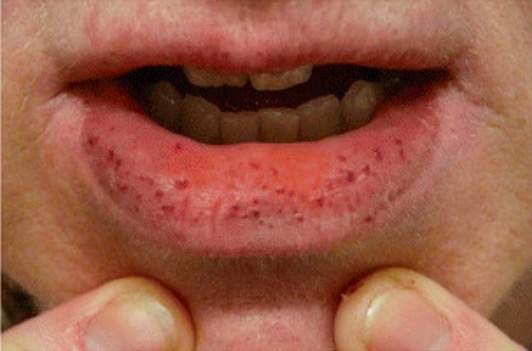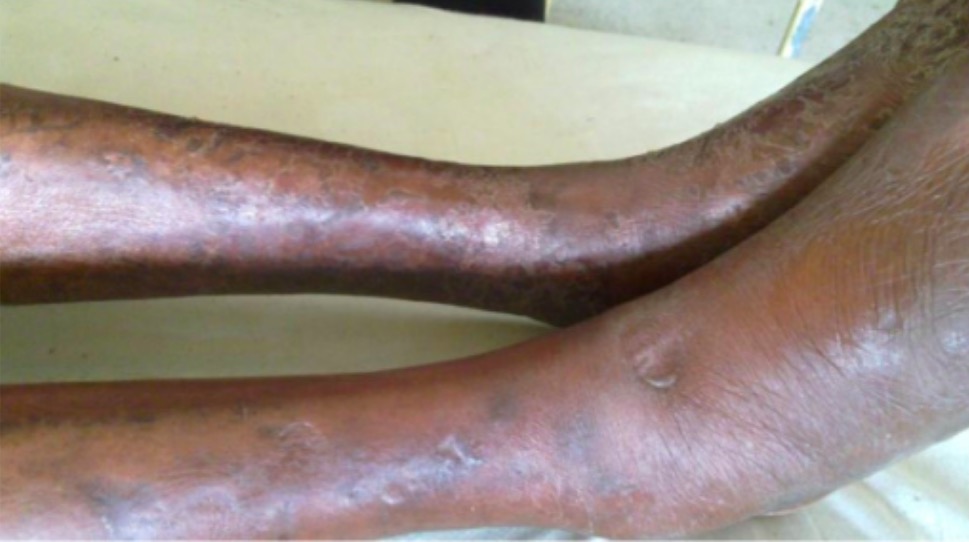Playlist
Show Playlist
Hide Playlist
Hypercoagulability: Primary Causes
-
Slides Clotting Disorders.pdf
-
Download Lecture Overview
00:01 In this lecture, we’re going to discuss clotting disorders in children. 00:05 Let’s pause for a moment and re-remember Virchow’s triad. 00:09 This is the setting in which clots can form inside blood vessels. 00:13 This happens as a result of blood stasis, through endothelial damage and because of hypercoagulable state. 00:21 And in this lecture, we’re going to focus a little bit on the hypercoagulable state of children. 00:26 In general, clots in children are far rarer than in adults. 00:31 Their endothelial lining is in perfect condition, but they may have a hypercoagulable state that can lead them to form blood clots. 00:40 So let’s talk about the primary causes of hypercoagulability and the first one I want to talk about is factor V Leiden mutation. 00:48 Okay. 00:49 Factor V Leiden mutation is a mutation that causes resistance in the breakdown of factors by protein C. 00:59 So this is the most common inheritable cause of hypercoagulability and it presents typically in adulthood, not in childhood, but rarely can. 01:09 This is usually presenting with arterial and venous clots in patients. 01:16 So another one is antithrombin III deficiency. 01:22 This is a problem where antithrombin III forms a complex with activated thrombin, factors 10A, 9A, and 11A. 01:32 Antithrombin III neutralizes these clotting factors and homozygous patients die in utero, but heterozygous patients often have venous thrombosis. 01:44 And they usually present in the teen years. 01:46 Another type of hypercoagulability is protein C and S deficiency. 01:52 If you recall, protein C and S are necessary for breaking down clotting factors VA and VIIIA. 01:59 Patients who are heterozygous for this condition may present with mild increased risk for clots generally in their second decade of life. 02:07 However, homozygous patients will present in infancy, specifically in the neonatal period with an entity called neonatal purpura fulminans. 02:17 This is obviously an incredibly rare condition, but these patients have clots all over through their body and mortality is quite high. 02:26 Let’s talk about prothrombin mutations. 02:29 That’s another primary cause of hypercoagulability. 02:33 In patients with prothrombin mutation, this can result in excess thrombin and formation of clots. 02:40 There is an increased risk in adulthood, it’s less commonly found in children. 02:46 Lastly, the MTHFR mutation. 02:52 The MTHFR mutation is a genetic cause of increased homocysteine in the blood. 03:00 Basically, it’s a mutation in methylenetetrahydrofolate reductase. 03:06 This enzyme is responsible for turning homocysteine into methionine. 03:11 And because it’s not working so well, these patients have a higher level of homocysteine. 03:16 This results in a blood vessel wall damage and resultingly, a hypercoagulable state.
About the Lecture
The lecture Hypercoagulability: Primary Causes by Brian Alverson, MD is from the course Pediatric Hematology.
Included Quiz Questions
All of the following are causes of hypercoagulability, EXCEPT?
- Factor VIII deficiency
- Homocysteinemia
- Protein C deficiency
- Prothrombin mutation
- MTHFR mutation
Which of the following does not cause a hypercoagulable state?
- Type-1 Von Willebrand factor deficiency
- Factor V Leiden
- Antithrombin III deficiency
- Protein S deficiency
- MTHFR mutation
Which of the following is true regarding factor V Leiden?
- The most common inherited thrombophilia in individuals with venous thromboembolism
- Most commonly presents in early childhood
- Common cause of clot formation in arteries
- Results in increased activation of protein C
- Pregnancy complications are frequent.
Which of the following is true regarding protein C deficiency?
- Causes reduced inactivation of factors Va and VIIIa
- Causes excessive bleeding in severe forms
- Most commonly presents in infancy
- Prevents warfarin-induced skin necrosis
- The homozygous form is more common.
Customer reviews
5,0 of 5 stars
| 5 Stars |
|
1 |
| 4 Stars |
|
0 |
| 3 Stars |
|
0 |
| 2 Stars |
|
0 |
| 1 Star |
|
0 |
Excellent lecture. Hematology is often poorly explained. This is not the case here. Thanks!





